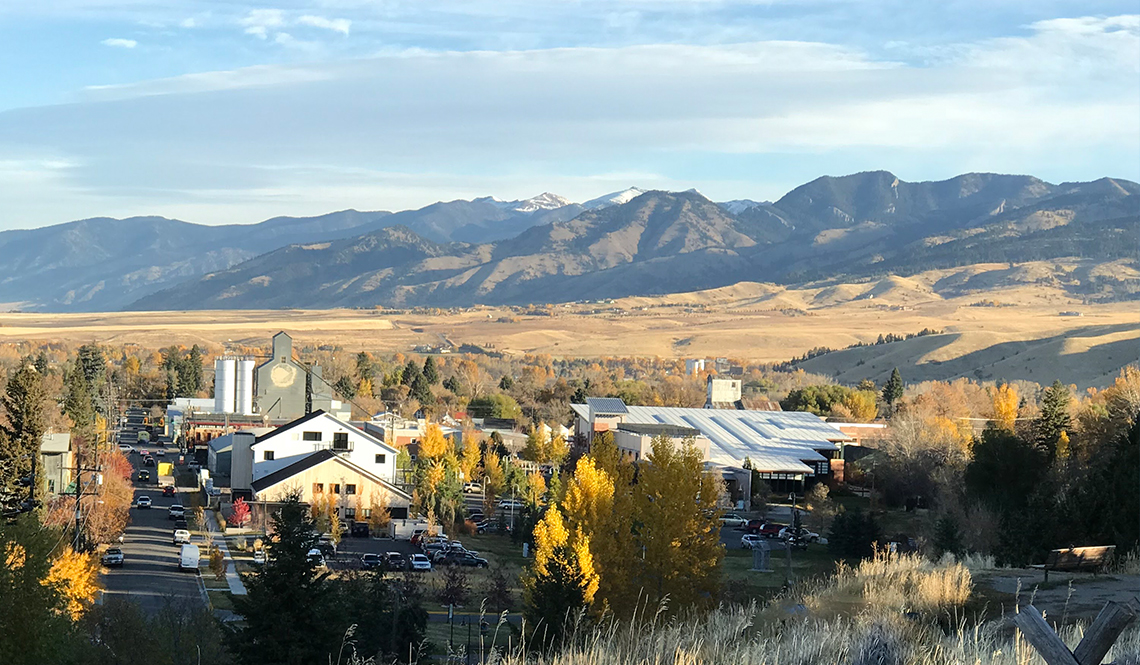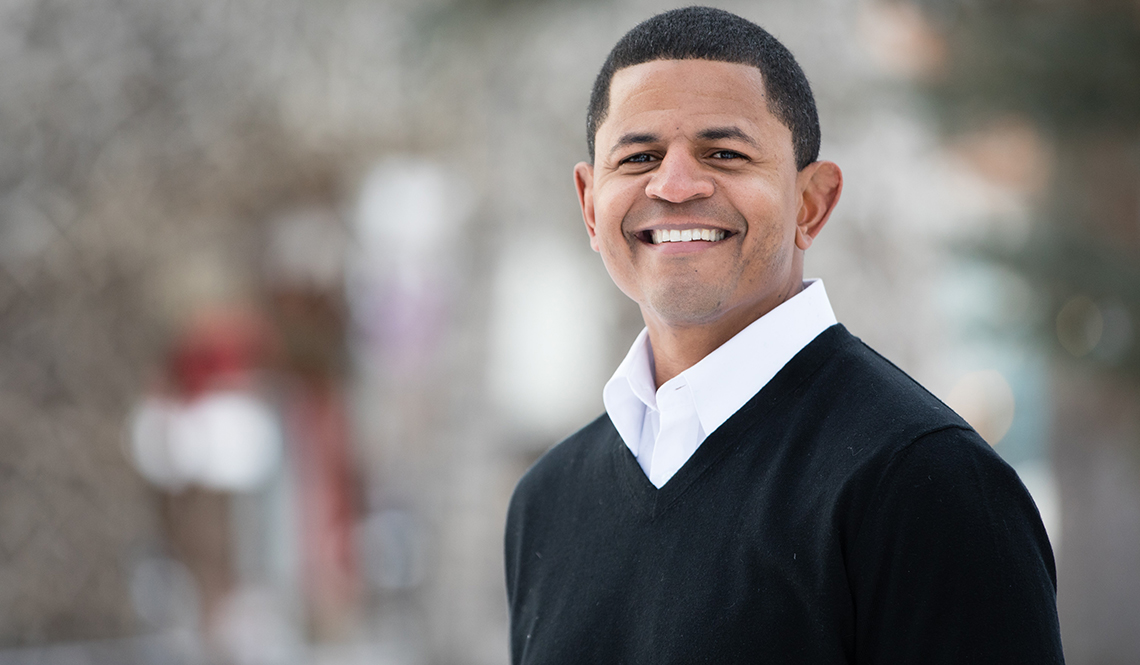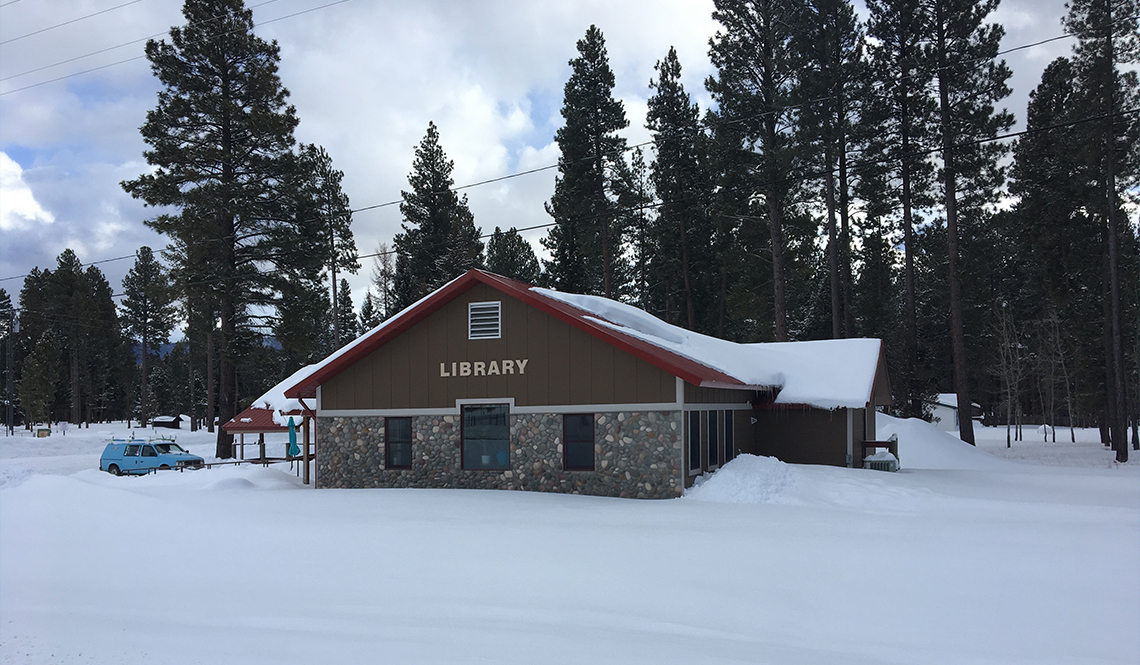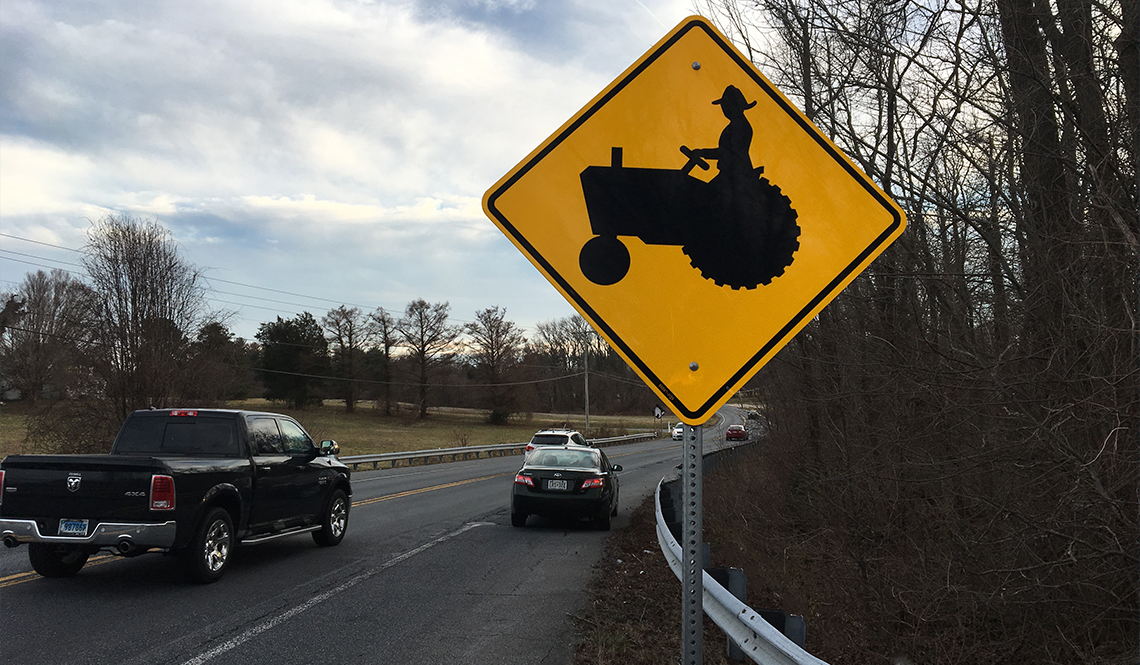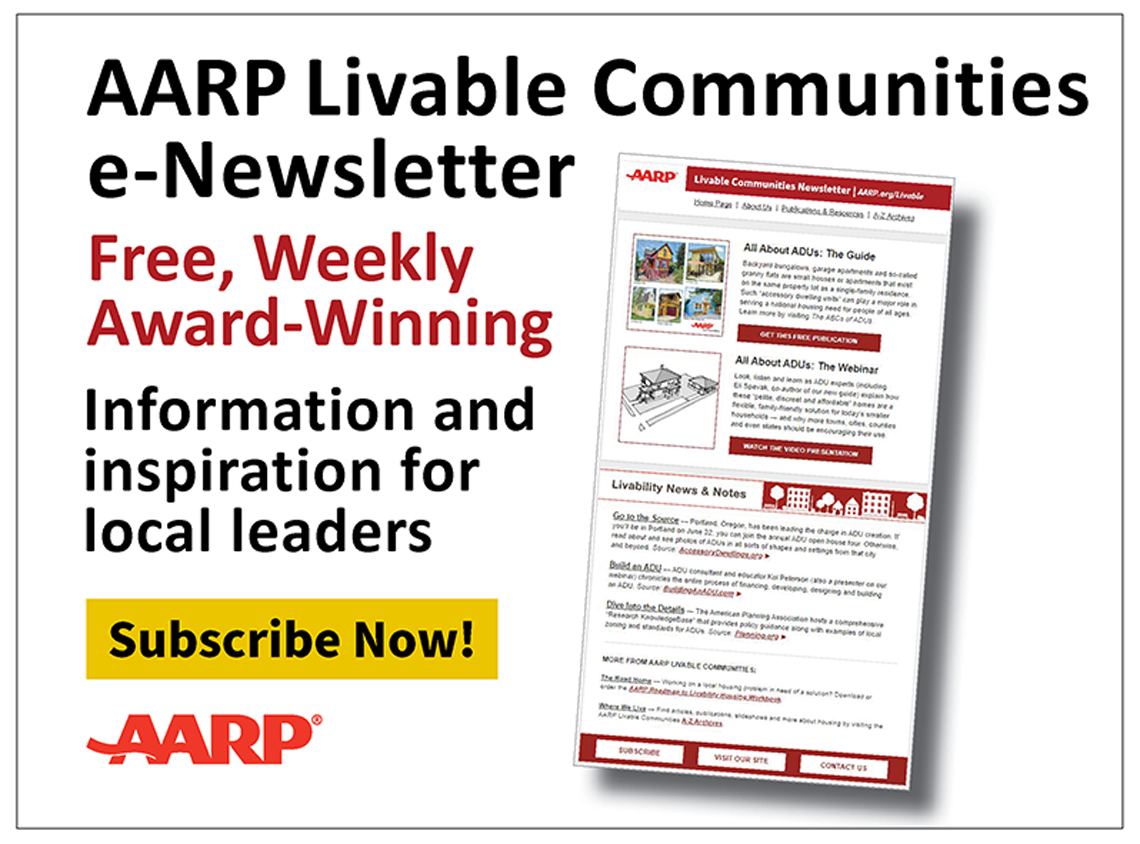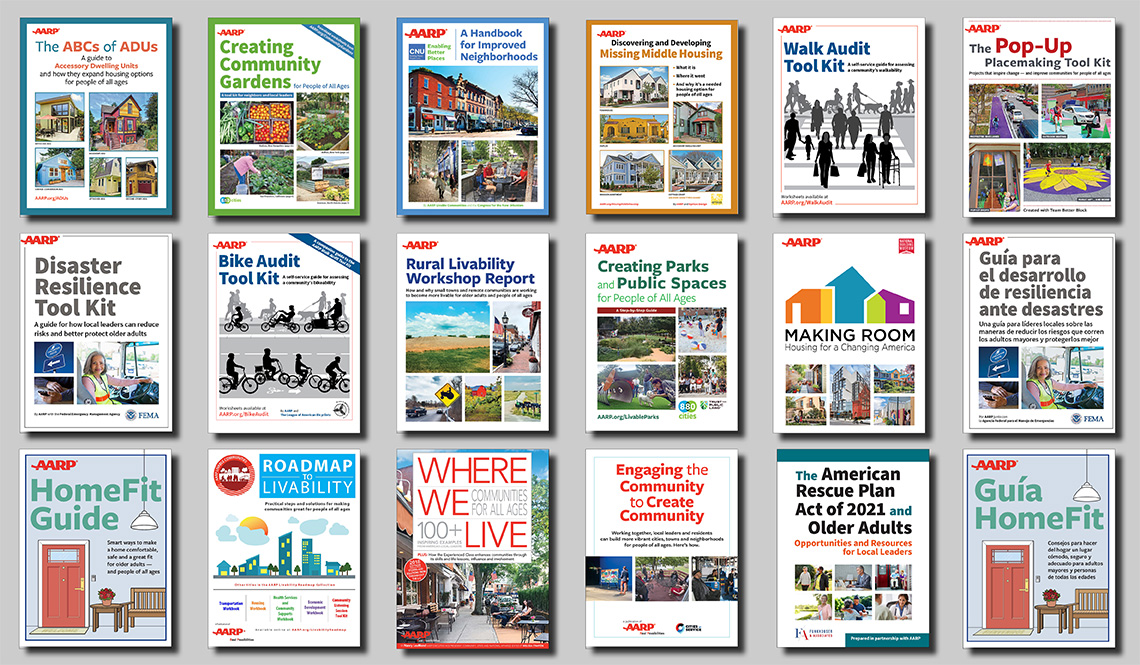5 Questions About Rural Livability
AARP speaks with LaMonte Guillory of LOR, a foundation dedicated to preserving the character and supporting the prosperity of rural communities
The LOR Foundation works to support the prosperity and preserve the character of rural communities. AARP is working with LOR to draw more attention to rural livability issues and foster solutions that help smaller communities remain vital. LOR was a generous supporter of the 2018 AARP Livable Communities National Conference, where a number of sessions and workshops were devoted to rural issues. (See the article "Focusing on Rural Livability" for insights from the gathering.)
The widening political, cultural and economic divide between urban and rural Americans has been a near constant topic of discussion in the media for several years. It sometimes sounds as if America is splitting into two hostile nations — one side prosperous, diverse, young and future-focused; the other side poorer, whiter, older and yearning for the good old days. Is this really the case?
Not at all, says LaMonte Guillory, leader and chief communications officer of the LOR Foundation, which champions small communities in the nation’s Mountain West — namely Wyoming, Idaho, Montana, New Mexico and Colorado. "We understand why people are rural by choice. Our hope is to make that choice easier," declares the organization's website.
LOR does that by listening to residents' visions for their communities and then working to "provide expertise, make connections and support projects that allow towns to thrive." This can mean revitalizing Main Streets, protecting clean water supplies, improving opportunities for outdoor recreation and other citizen-led initiatives
Guillory himself punctures stereotypes about rural regions. He is an African-American eco-advocate living in small-town Wyoming. He serves on the national board of directors for the Rural Communities Assistance Partnership, the Communications Network and the Rural Development Innovation Group.
Guillory jokes that he thought he grew up in a small town — Beaumont, Texas — before moving to Wyoming, where people told him that a community of 100,000 was a really big city.
1. What does livability mean for you?
A livable community has to be responsive to every resident and make sure every voice is heard. One of the reasons we are partnering with AARP is to learn more about what older people in rural areas think, how they define livability and what they envision for their community.
2. Some people view livability as a big-city thing. How are quality-of-life issues different between urban and rural communities? And how are they the same?
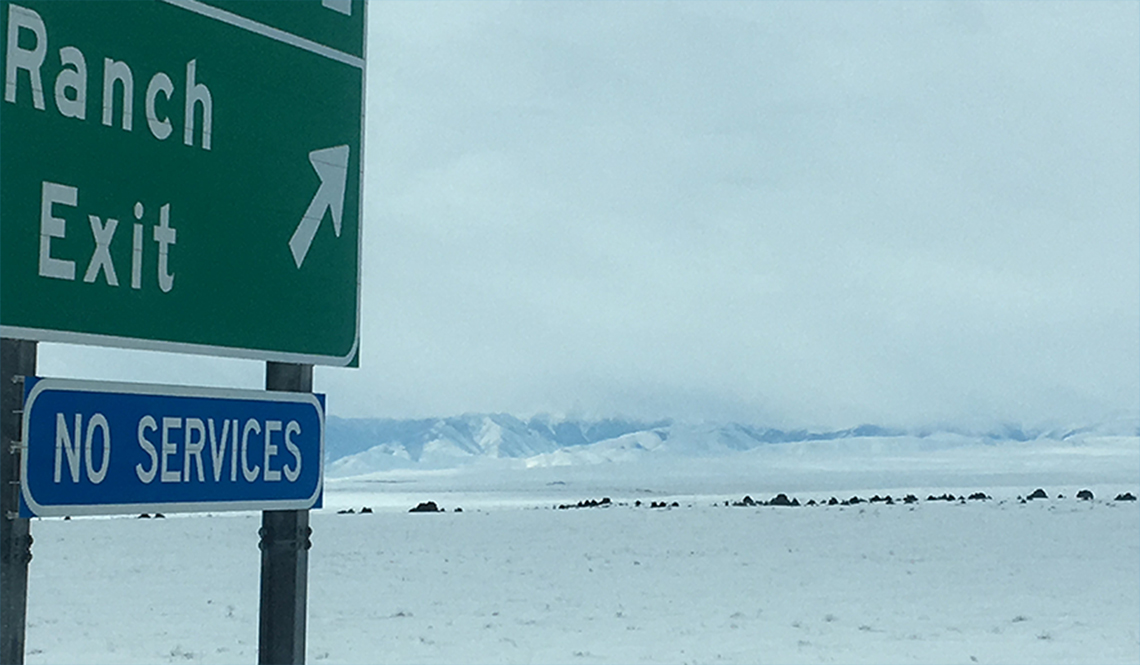
Photo by Brian Stanton
U.S. Route 20 connects Oregon and Montana. This ranch exit with no services is in Idaho.
"Transportation is the biggest problem in towns throughout the Mountain West," says LaMonte Guillory. "You’re looking at a relatively small number of people spread out across a wide area of land. It’s common for rural residents to drive an hour or more to the nearest grocery store." The photo above was taken in Montana.
We're seeing a convergence of what people in rural areas want and what people in urban areas want. Generally speaking, everyone wants clean drinking water, good access to health care, safe and affordable housing, economic prosperity, and all the community features that help ensure a healthy, vital life.
We do find that in urban areas, discussions of livability focus a lot on the built environment —urban planning, transportation infrastructure. In rural areas, there's also a strong focus on personal connections — how a person is linked with other people living in the community. There's an emphasis on nature as part of livability in rural areas, too. Recreation, for instance, is about being in a natural place, not just getting exercise.
The most important thing we've learned is that people everywhere are not that different. We all want to see better communities, more prosperity, better wages. The urban-rural divide is an artificial narrative. A lot more people today are talking about opportunities for all of us, not about what divides us.
3. What are the chief problems facing older Americans in rural communities, and what solutions do you see?
Transportation and health care are the two major ones, with access to affordable housing a real problem in a growing number of communities.
Our research shows that transportation is the biggest problem in towns throughout the Mountain West. You're looking at a relatively small number of people spread out across a wide area of land. It’s common for rural residents to drive an hour or more to the nearest grocery store.
Some older people rely on friends, families and neighbors to go places. But as older people make up a larger share of the rural population, we need to look toward other solutions. Uber or Lyft could be an answer. Use of social media can also help connect people to what they need in terms of transportation and other services.
"Expanding high-speed internet can make a huge difference for small towns because it widens their appeal to younger people who want to move somewhere with great access to the outdoors," says Guillory. "Good internet connections open opportunities for working remotely. Without it, it's harder for younger people to move or stay here."
Access to health care is a real challenge. It can be several hours to the nearest hospital. However tele-medicine — doctors using digital connections to see patients and confer with medical specialists — is starting to show some promise. Robotic surgery might also be really beneficial. Rural places should become the pilot projects for these kind of innovations.
Housing is a problem in some small towns in the West that are becoming tourist attractions. When a higher-net-worth demographic moves in, it can present a situation where the residents get priced out mainly because of supply. The region is trying to figure out the right balance between development, which can be good for the community, and housing affordability.
4. Older residents generally make up a larger share of the population in rural communities. How do we make sure their needs are met while we also promote the importance of intergenerational communities, which are the kinds of places where many older Americans want to live?
The dynamics of the global economy have done some real damage to rural communities, especially those dependent on industries like mining or manufacturing. We need to grow new industries that pay good wages and are environmentally responsible.
The expansion of high-speed internet can make a huge difference for small towns because it widens their appeal to younger people who want to move somewhere with great access to the outdoors. Good internet connections open opportunities for people to work remotely. Without it, it's harder for younger people to move or stay here.
Building more trails and pathways is another way to make a great community for everyone. You can see 8-year-olds and 80-year-olds out using them, which helps bring people closer together.
Visit AARP.org/RuralLivability, our archive of articles and resources about and for rural communities.
5. What challenges and opportunities do you see for smaller communities in the midst of a changing economy, increasing diversity and shifting social patterns?
Most people realize that change is paramount if we want to thrive. There is a way to grow without changing the basic character of a place. Change needs to make sense to rural people on their own terms — not just change for the sake of change.
This is another reason why it's important that everybody listens to one another. That means getting rid of the "I was here first" mentality. There's a great benefit in hearing new ideas from people new to town. Of course, long-time residents need to be heard too. The more people talk about community issues, the more they'll come up with good ideas.
Actually, change can help the community stay the same. Some new ideas — like local food initiatives — wind up restoring the character of the community. Welcoming immigrants and other newcomers can help keep a school system open and create more opportunities for young people to stay in town.
Jay Walljasper is a Minnesota-based journalist and author of The Great Neighborhood Book. A writer-in-residence at Augsburg University, he writes, speaks and consults about livable communities.
Article published March 2019
Related Content
AARP.org/Livable
Enter a topic, name, place, etc.

